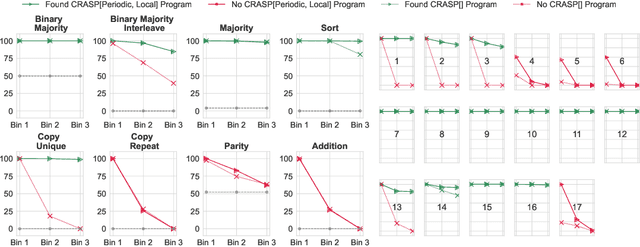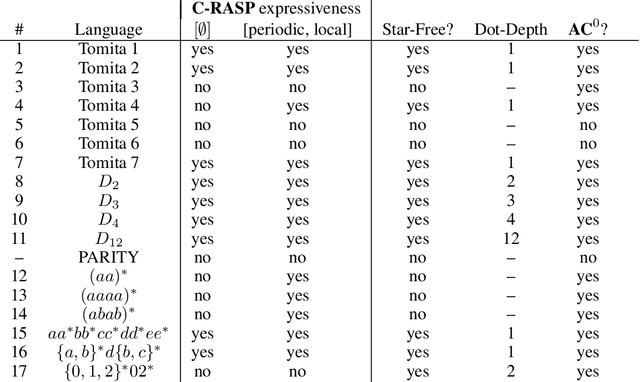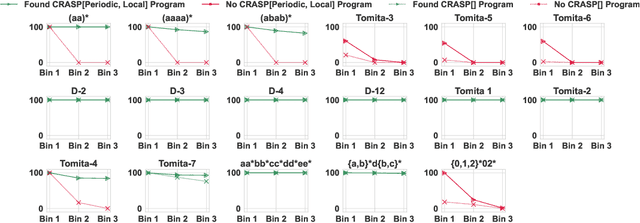Xinting Huang
Low-hallucination Synthetic Captions for Large-Scale Vision-Language Model Pre-training
Apr 17, 2025Abstract:In recent years, the field of vision-language model pre-training has experienced rapid advancements, driven primarily by the continuous enhancement of textual capabilities in large language models. However, existing training paradigms for multimodal large language models heavily rely on high-quality image-text pairs. As models and data scales grow exponentially, the availability of such meticulously curated data has become increasingly scarce and saturated, thereby severely limiting further advancements in this domain. This study investigates scalable caption generation techniques for vision-language model pre-training and demonstrates that large-scale low-hallucination synthetic captions can serve dual purposes: 1) acting as a viable alternative to real-world data for pre-training paradigms and 2) achieving superior performance enhancement when integrated into vision-language models through empirical validation. This paper presents three key contributions: 1) a novel pipeline for generating high-quality, low-hallucination, and knowledge-rich synthetic captions. Our continuous DPO methodology yields remarkable results in reducing hallucinations. Specifically, the non-hallucination caption rate on a held-out test set increases from 48.2% to 77.9% for a 7B-size model. 2) Comprehensive empirical validation reveals that our synthetic captions confer superior pre-training advantages over their counterparts. Across 35 vision language tasks, the model trained with our data achieves a significant performance gain of at least 6.2% compared to alt-text pairs and other previous work. Meanwhile, it also offers considerable support in the text-to-image domain. With our dataset, the FID score is reduced by 17.1 on a real-world validation benchmark and 13.3 on the MSCOCO validation benchmark. 3) We will release Hunyuan-Recap100M, a low-hallucination and knowledge-intensive synthetic caption dataset.
Contextualize-then-Aggregate: Circuits for In-Context Learning in Gemma-2 2B
Mar 31, 2025Abstract:In-Context Learning (ICL) is an intriguing ability of large language models (LLMs). Despite a substantial amount of work on its behavioral aspects and how it emerges in miniature setups, it remains unclear which mechanism assembles task information from the individual examples in a fewshot prompt. We use causal interventions to identify information flow in Gemma-2 2B for five naturalistic ICL tasks. We find that the model infers task information using a two-step strategy we call contextualize-then-aggregate: In the lower layers, the model builds up representations of individual fewshot examples, which are contextualized by preceding examples through connections between fewshot input and output tokens across the sequence. In the higher layers, these representations are aggregated to identify the task and prepare prediction of the next output. The importance of the contextualization step differs between tasks, and it may become more important in the presence of ambiguous examples. Overall, by providing rigorous causal analysis, our results shed light on the mechanisms through which ICL happens in language models.
Lower Bounds for Chain-of-Thought Reasoning in Hard-Attention Transformers
Feb 04, 2025Abstract:Chain-of-thought reasoning and scratchpads have emerged as critical tools for enhancing the computational capabilities of transformers. While theoretical results show that polynomial-length scratchpads can extend transformers' expressivity from $TC^0$ to $PTIME$, their required length remains poorly understood. Empirical evidence even suggests that transformers need scratchpads even for many problems in $TC^0$, such as Parity or Multiplication, challenging optimistic bounds derived from circuit complexity. In this work, we initiate the study of systematic lower bounds for the number of CoT steps across different algorithmic problems, in the hard-attention regime. We study a variety of algorithmic problems, and provide bounds that are tight up to logarithmic factors. Overall, these results contribute to emerging understanding of the power and limitations of chain-of-thought reasoning.
A Silver Bullet or a Compromise for Full Attention? A Comprehensive Study of Gist Token-based Context Compression
Dec 23, 2024



Abstract:In this work, we provide a thorough investigation of gist-based context compression methods to improve long-context processing in large language models. We focus on two key questions: (1) How well can these methods replace full attention models? and (2) What potential failure patterns arise due to compression? Through extensive experiments, we show that while gist-based compression can achieve near-lossless performance on tasks like retrieval-augmented generation and long-document QA, it faces challenges in tasks like synthetic recall. Furthermore, we identify three key failure patterns: lost by the boundary, lost if surprise, and lost along the way. To mitigate these issues, we propose two effective strategies: fine-grained autoencoding, which enhances the reconstruction of original token information, and segment-wise token importance estimation, which adjusts optimization based on token dependencies. Our work provides valuable insights into the understanding of gist token-based context compression and offers practical strategies for improving compression capabilities.
Attention Entropy is a Key Factor: An Analysis of Parallel Context Encoding with Full-attention-based Pre-trained Language Models
Dec 21, 2024



Abstract:Large language models have shown remarkable performance across a wide range of language tasks, owing to their exceptional capabilities in context modeling. The most commonly used method of context modeling is full self-attention, as seen in standard decoder-only Transformers. Although powerful, this method can be inefficient for long sequences and may overlook inherent input structures. To address these problems, an alternative approach is parallel context encoding, which splits the context into sub-pieces and encodes them parallelly. Because parallel patterns are not encountered during training, naively applying parallel encoding leads to performance degradation. However, the underlying reasons and potential mitigations are unclear. In this work, we provide a detailed analysis of this issue and identify that unusually high attention entropy can be a key factor. Furthermore, we adopt two straightforward methods to reduce attention entropy by incorporating attention sinks and selective mechanisms. Experiments on various tasks reveal that these methods effectively lower irregular attention entropy and narrow performance gaps. We hope this study can illuminate ways to enhance context modeling mechanisms.
LoGU: Long-form Generation with Uncertainty Expressions
Oct 18, 2024



Abstract:While Large Language Models (LLMs) demonstrate impressive capabilities, they still struggle with generating factually incorrect content (i.e., hallucinations). A promising approach to mitigate this issue is enabling models to express uncertainty when unsure. Previous research on uncertainty modeling has primarily focused on short-form QA, but realworld applications often require much longer responses. In this work, we introduce the task of Long-form Generation with Uncertainty(LoGU). We identify two key challenges: Uncertainty Suppression, where models hesitate to express uncertainty, and Uncertainty Misalignment, where models convey uncertainty inaccurately. To tackle these challenges, we propose a refinement-based data collection framework and a two-stage training pipeline. Our framework adopts a divide-and-conquer strategy, refining uncertainty based on atomic claims. The collected data are then used in training through supervised fine-tuning (SFT) and direct preference optimization (DPO) to enhance uncertainty expression. Extensive experiments on three long-form instruction following datasets show that our method significantly improves accuracy, reduces hallucinations, and maintains the comprehensiveness of responses.
Atomic Calibration of LLMs in Long-Form Generations
Oct 17, 2024Abstract:Large language models (LLMs) often suffer from hallucinations, posing significant challenges for real-world applications. Confidence calibration, which estimates the underlying uncertainty of model predictions, is essential to enhance the LLMs' trustworthiness. Existing research on LLM calibration has primarily focused on short-form tasks, providing a single confidence score at the response level (macro calibration). However, this approach is insufficient for long-form generations, where responses often contain more complex statements and may include both accurate and inaccurate information. Therefore, we introduce atomic calibration, a novel approach that evaluates factuality calibration at a fine-grained level by breaking down long responses into atomic claims. We classify confidence elicitation methods into discriminative and generative types and demonstrate that their combination can enhance calibration. Our extensive experiments on various LLMs and datasets show that atomic calibration is well-suited for long-form generation and can also improve macro calibration results. Additionally, atomic calibration reveals insightful patterns in LLM confidence throughout the generation process.
Selection-p: Self-Supervised Task-Agnostic Prompt Compression for Faithfulness and Transferability
Oct 15, 2024



Abstract:Large Language Models (LLMs) have demonstrated impressive capabilities in a wide range of natural language processing tasks when leveraging in-context learning. To mitigate the additional computational and financial costs associated with in-context learning, several prompt compression methods have been proposed to compress the in-context learning prompts. Despite their success, these methods face challenges with transferability due to model-specific compression, or rely on external training data, such as GPT-4. In this paper, we investigate the ability of LLMs to develop a unified compression method that discretizes uninformative tokens, utilizing a self-supervised pre-training technique. By introducing a small number of parameters during the continual pre-training, the proposed Selection-p produces a probability for each input token, indicating whether to preserve or discard it. Experiments show Selection-p achieves state-of-the-art performance across numerous classification tasks, achieving compression rates of up to 10 times while experiencing only a marginal 0.8% decrease in performance. Moreover, it exhibits superior transferability to different models compared to prior work. Additionally, we further analyze how Selection-p helps maintain performance on in-context learning with long contexts.
A Formal Framework for Understanding Length Generalization in Transformers
Oct 03, 2024



Abstract:A major challenge for transformers is generalizing to sequences longer than those observed during training. While previous works have empirically shown that transformers can either succeed or fail at length generalization depending on the task, theoretical understanding of this phenomenon remains limited. In this work, we introduce a rigorous theoretical framework to analyze length generalization in causal transformers with learnable absolute positional encodings. In particular, we characterize those functions that are identifiable in the limit from sufficiently long inputs with absolute positional encodings under an idealized inference scheme using a norm-based regularizer. This enables us to prove the possibility of length generalization for a rich family of problems. We experimentally validate the theory as a predictor of success and failure of length generalization across a range of algorithmic and formal language tasks. Our theory not only explains a broad set of empirical observations but also opens the way to provably predicting length generalization capabilities in transformers.
See or Guess: Counterfactually Regularized Image Captioning
Aug 29, 2024



Abstract:Image captioning, which generates natural language descriptions of the visual information in an image, is a crucial task in vision-language research. Previous models have typically addressed this task by aligning the generative capabilities of machines with human intelligence through statistical fitting of existing datasets. While effective for normal images, they may struggle to accurately describe those where certain parts of the image are obscured or edited, unlike humans who excel in such cases. These weaknesses they exhibit, including hallucinations and limited interpretability, often hinder performance in scenarios with shifted association patterns. In this paper, we present a generic image captioning framework that employs causal inference to make existing models more capable of interventional tasks, and counterfactually explainable. Our approach includes two variants leveraging either total effect or natural direct effect. Integrating them into the training process enables models to handle counterfactual scenarios, increasing their generalizability. Extensive experiments on various datasets show that our method effectively reduces hallucinations and improves the model's faithfulness to images, demonstrating high portability across both small-scale and large-scale image-to-text models. The code is available at https://github.com/Aman-4-Real/See-or-Guess.
 Add to Chrome
Add to Chrome Add to Firefox
Add to Firefox Add to Edge
Add to Edge